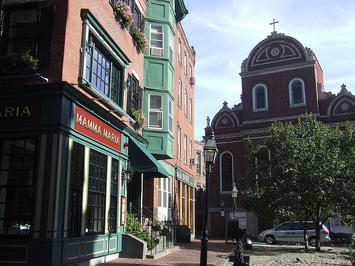
Are we heading into a new era of local solutions?
Western economists and governments usually measure the health of the job market by unemployment percentages, with unemployment defined as less-than-full-time employment. But the reality for many Americans today is more akin to the rest of the world. Dad may not have a full-time job, but instead works several part-time jobs – auto mechanic when there are customers, store clerk on the weekends, and perhaps furniture repair guy for the neighborhood. Mom probably has a few part-time jobs also: housekeeper at a nearby hotel, caterer, and babysitter. Children old enough to work may do odd jobs.
This kind of economy may be more prevalent than economists think. It breeds neither hope nor health, especially since most remember the before-times.
Active resistance to this dark vision likely means more local solutions to economic problems. Instead of the turnaround coming from above, it may instead come from below. Big oil, big finance, and their floundering politicians are not the place to look for answers anymore. This may come as no surprise to anyone who has watched the last four years worth of turmoil, but the media, which is caught up in this game, is missing a much bigger story.
A good example from recent history is the turnaround performed by Boston’s North End neighborhood. Before World War II, this neighborhood was a classic immigrant community, and considered unhealthy, dangerous, and poor. After the war it was blacklisted by bankers who refused mortgages for home buyers, and the North End was cut off by the Central Artery highway running through the city. It became Boston's odd, leftover district.
But a mysterious thing happened to the North End. The nation's great urbanist, Jane Jacobs, visited it in 1959 with the director of the Boston Housing Authority, who wanted to show her the neighborhood before it was razed in the name of urban renewal. What she saw was a vibrant, robust street life, beautifully restored buildings, tenements that had been repurposed for middle-income flats, and a sense of pride in the neighborhood. After researching the area, she discovered it had the lowest crime rate, disease rate, and mortality rate in the city. Jacobs successfully staved off the bulldozers, and the North End still exists as one of the most picturesque neighborhoods in America today.
Because the North End was cut off by institutional investors, the neighborhood became economically introverted. Construction work was done on a cash or barter basis, and people made slow, incremental changes to their residences as the money became available. Instead of relying on banks for big credit infusions, North Enders relied on themselves.
By the standards of mainstream economists like Paul Krugman, the economy seems to be unraveling. A different way to view this phenomenon is to see it as multiplexing: different channels are being created. When only one channel is effectively being considered, other channels are developed without much scrutiny.
Tippy Perez is a typical example of someone who has tuned in to a local economic channel. As a paralegal for a large Orlando corporation with thousands of employees, Ms. Perez had job security, benefits, and the signature suburban lifestyle of the mainstream economy. Last year, however, she quit her job. “It was a dead-end job that wasn’t worth the fight anymore,” she stated. Between uncertain job security and the increasingly vicious corporate politics that come with the territory at such a large firm, her mainstream economy job simply could not hold her. After she quit Ms. Perez began a neighborhood pet-sitting service. Within a few months her home-based business has taken off, and she will never look back.
It’s busy and demanding, and lacks such mainstream amenities as a 401K, vacation, and sick leave, and Ms. Perez left a fine professional career for the service industry. This move, however, has much greater appeal to her because she can regulate the pressure. The income, although smaller, comes with less stress. Corporate downshifters starting bike shops and farms have been around for some time, but those are usually stories of escape from an urban location. Ms. Perez is part of an increasing population that has chosen to stay in the same place, but to downshift out of the mainstream into the local economy, sometimes as local as the immediate neighborhood.
Food trucks are another example. The restaurant world, so overrun by big brand franchises and chains, has been seriously challenged by a new form of dining with little overhead and a spicy, independent spirit. The popularity of these trucks comes from the fatigue we are suffering from the high prices and industrialized food production typical of so many restaurants today. Alert neighborhood organizations are combining food truck rallies with local farmers’ markets and other events to create new forms of public involvement. Without the regulatory burden that comes with public accommodations, food trucks are a sign of this new economy.
The hallmark of each of these phenomena is its localism. As in the North End, no one is waiting for the big banks to come in and fix things. Instead, people are turning local needs into opportunities at a scale that is small enough that outside help is not needed. Under our very noses, a new economy is being born. Our towns and cities will adapt to this form long before it is noticed by the mainstream. The ingenuity and ambition of individuals will be the factors that bring us out of the Millennial Depression, and create a new economy for the future.
Richard Reep is an architect and artist who lives in Winter Park, Florida. His practice has centered around hospitality-driven mixed use, and he has contributed in various capacities to urban mixed-use projects, both nationally and internationally, for the last 25 years.
Flickr photo: Boston's North End by P Medved












